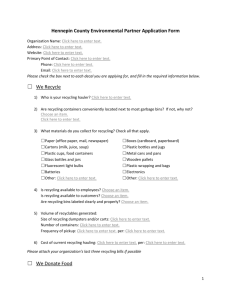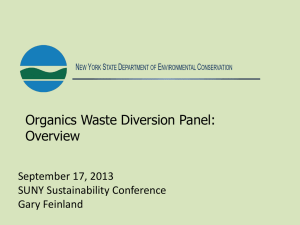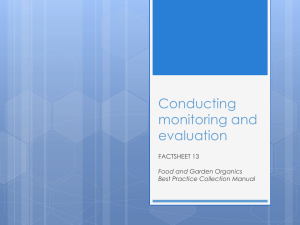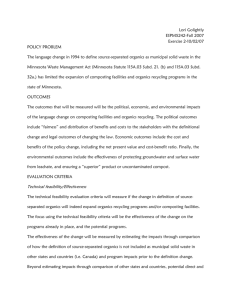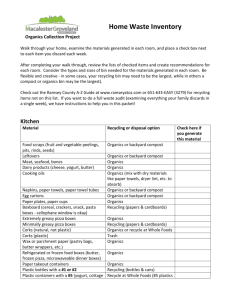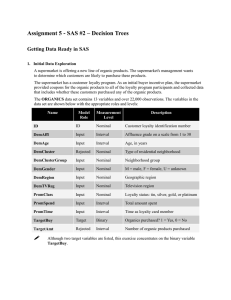sample organics program brochure text (DOC)
advertisement
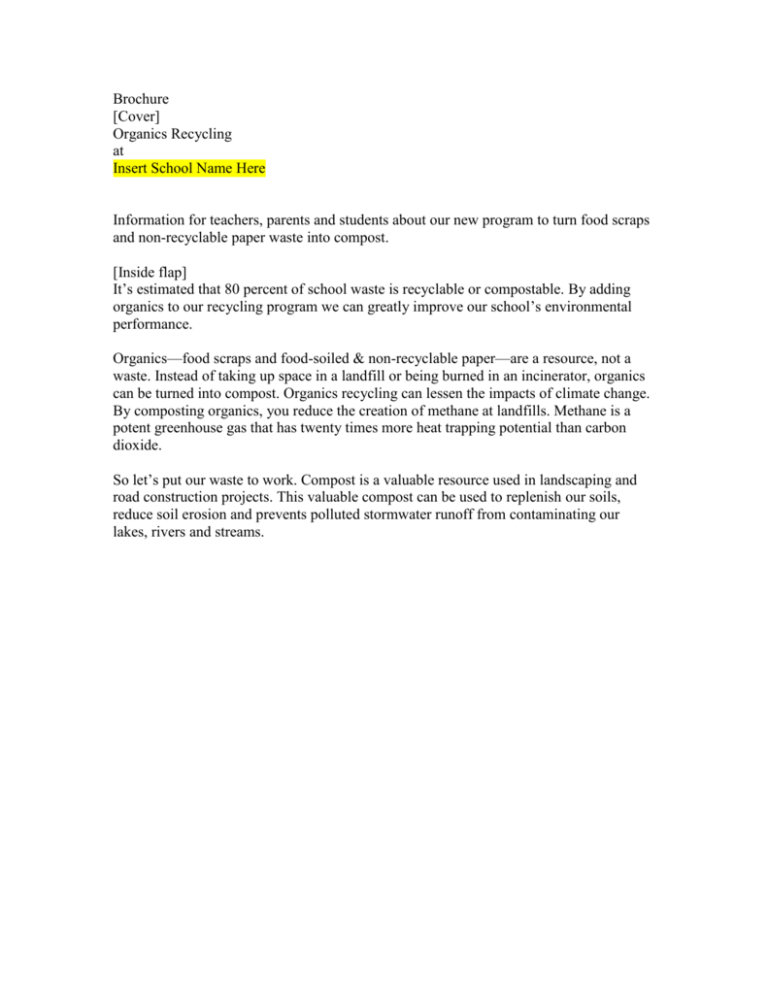
Brochure [Cover] Organics Recycling at Insert School Name Here Information for teachers, parents and students about our new program to turn food scraps and non-recyclable paper waste into compost. [Inside flap] It’s estimated that 80 percent of school waste is recyclable or compostable. By adding organics to our recycling program we can greatly improve our school’s environmental performance. Organics—food scraps and food-soiled & non-recyclable paper—are a resource, not a waste. Instead of taking up space in a landfill or being burned in an incinerator, organics can be turned into compost. Organics recycling can lessen the impacts of climate change. By composting organics, you reduce the creation of methane at landfills. Methane is a potent greenhouse gas that has twenty times more heat trapping potential than carbon dioxide. So let’s put our waste to work. Compost is a valuable resource used in landscaping and road construction projects. This valuable compost can be used to replenish our soils, reduce soil erosion and prevents polluted stormwater runoff from contaminating our lakes, rivers and streams. [Inside spread] How will it work in our school? Use this space to explain what specific changes will be made in the school. For example: Organics bins have been added to the lunchroom. Staff and students will separate their trash into three bins: organics, recycling and trash. In addition, paper towels and tissues in the restrooms will be added to the organics bin. Recycling bins have been added to staff areas and classrooms for paper and cans and bottles. How to treat your trash? Think Recycling first All paper: old assignments, notebooks, mail, magazines, newspapers & inserts, etc. Metal cans Plastic bottles Fruit and yogurt cups Glass bottles Cardboard Milk cartons & juice boxes Organics second All food scraps: Fruit and vegetables Meat, fish and bones Bread, pasta, and baked goods Egg shells Dairy products Coffee grounds Trash last Plastic: o Bags o Utensils o Straws o Wrappers Foil wrappers Candy wrappers Chip bags Styrofoam Frozen food boxes Food-soiled & nonrecyclable paper products: Paper towels & napkins Waxed paper Parchment paper Uncoated paper plates & cups Questions about the program? Insert contact person and phone number, website address [Sign-off panel] What can you do at home to help? When packing lunches and snacks, use reusable containers and waxed paper. Avoid disposable packaging and plastic bags. Review your city’s recycling guide and recycle as much as you can. If the program is available in your community, participate in curbside organic recycling. If it isn’t available, contact your city council and let them know you are interested in having the service added to your community recycling program. Insert school logo and/or name here. You can also use this space to promote other environment initiative happen at your school. H logo and organics logo This program is funded in part by a grant from Hennepin County. Printed on recycled paper. (if applicable)
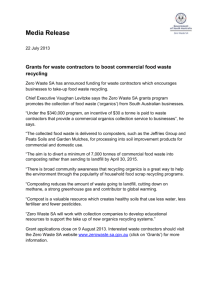
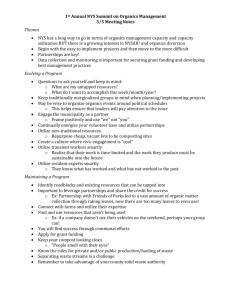
![School [recycling, compost, or waste reduction] case study](http://s3.studylib.net/store/data/005898792_1-08f8f34cac7a57869e865e0c3646f10a-300x300.png)
